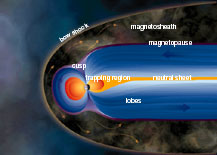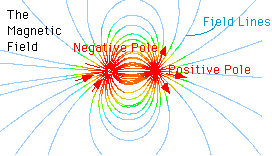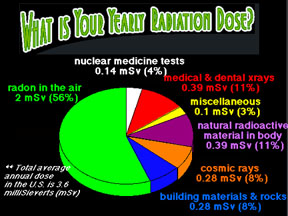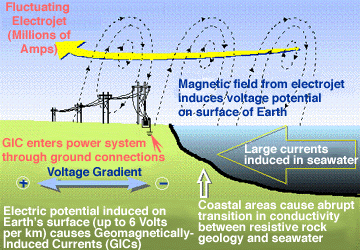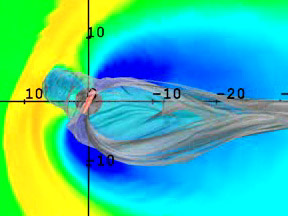Click on image for full size
Windows to the Universe original artwork.
Space Weather at Earth and in Near-Earth Space (Geospace)
Earth's magnetosphere shields our planet from most of the solar wind. Some solar wind particles do leak in and combine with ions escaping from the top of Earth's atmosphere to populate the magnetosphere with plasma. These energetic particles impact our lives as well - delighting us with beautiful auroral displays or bedeviling us by "zapping" electronics on satellites.
Earth's magnetic field produces a cavity in the solar wind around our planet - Earth's magnetosphere. Solar wind protons and electrons mix with ionized gases leaked from the top of Earth's atmosphere to form a complex "soup" of plasma within the magnetosphere. The force of the IMF and Earth's magnetic field on these charged particles pushes the particles about, generating electrical currents within the plasmas and accelerating some particles to high energies. The uppermost reaches of Earth's atmosphere merge gradually into space. Gases high in the atmosphere absorb most of the harshest forms of radiation from space, including energetic x-rays and ultraviolet photons. Accelerated, ionized gases escape the atmosphere into space, while solar wind particles "precipitate" onto the upper atmosphere from the magnetosphere.
What affect does space weather have on human society? Radiation can damage electronics on satellites and pose health risks to astronauts. Electrical and magnetic disturbances disrupt radio communications, cause electrical power blackouts, and diminish accuracy of Global Positioning Systems (GPS). However, our atmosphere does protect us from most of the dangers posed by radiation from space, and sometimes even treats us to a wonderful show in the form of the aurora.







